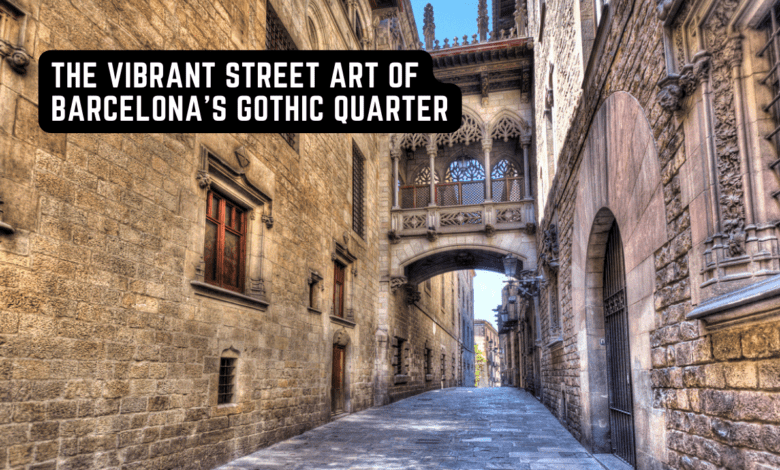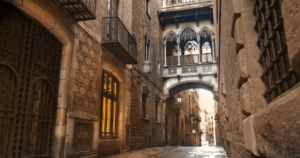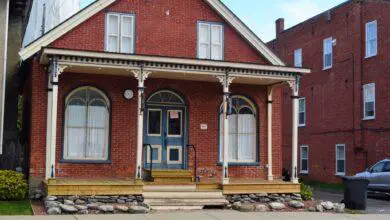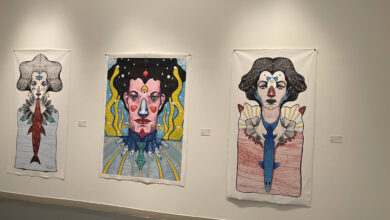Street Art of Barcelona’s Gothic Quarter 🏙️ | Vibrant Urban Murals and Graffiti
Dive into the Creative Canvas of Barcelona's Historic Neighborhood 🇪🇸

Street Art of Barcelona – Nestled amidst the ancient cobblestone streets and historic architecture of Barcelona’s Gothic Quarter lies a hidden treasure that adds a contemporary and colorful flair to this centuries-old neighborhood. The vibrant street art of the Gothic Quarter is a testament to the city’s rich cultural tapestry, where the past seamlessly intertwines with the present.
In this blog post, we will embark on a visual journey through the narrow alleys and bustling squares of this captivating district, unveiling the stories, artists, and inspirations behind the stunning murals and graffiti that adorn its walls.
The Historical and Cultural Context
Brief History of the Gothic Quarter
The Gothic Quarter, known locally as “Barri Gòtic,” is a mesmerizing labyrinth of narrow streets and historic buildings nestled in the heart of Barcelona, Spain. Its rich history dates back over 2,000 years, making it one of the city’s most iconic and historically significant neighborhoods. To explore its charm is to embark on a journey through time.
Founded by the Romans in the 1st century BC, the Gothic Quarter is characterized by its well-preserved medieval architecture, including the stunning Barcelona Cathedral, which took over 150 years to build and stands as a testament to the city’s enduring heritage. The Gothic Quarter witnessed the rise of the Catalan-Aragonese Empire, and its history is intertwined with the artistic and architectural achievements of this period.
Over the centuries, the Gothic Quarter has witnessed numerous transformations, from the Romanesque to the Gothic and Baroque periods, each leaving a distinct imprint on its streets and buildings. Today, it stands as a living museum, inviting visitors to immerse themselves in its history and marvel at its architectural treasures.

Influence of Catalan Culture on Street Art
Catalan culture has had a profound influence on the street art scene in the Gothic Quarter. Catalonia, with its rich traditions, language, and identity, has a long history of embracing creativity and self-expression. This cultural ethos finds a vibrant outlet in the form of street art, which has become an integral part of the district’s identity.
From colorful murals celebrating Catalonia’s cultural heritage to thought-provoking graffiti pieces that reflect the region’s contemporary issues, the streets of the Gothic Quarter are a canvas for Catalan artists to convey their messages and emotions. The vibrant street art scene in the neighborhood serves as a reflection of Catalonia’s commitment to preserving its unique cultural identity.
How Street Art Complements the District’s Rich History
While the Gothic Quarter’s historic charm is undeniable, street art provides a dynamic contrast that complements the district’s rich history. It breathes new life into ancient stone walls and alleyways, creating a fusion of old and new that resonates with both locals and tourists.
The juxtaposition of medieval architecture with modern street art generates a unique visual experience, inviting viewers to contemplate the passage of time and the evolving cultural narratives of the neighborhood. Street art in the Gothic Quarter isn’t merely a form of artistic expression; it’s a bridge that connects the past with the present, showcasing how tradition and innovation can coexist harmoniously.
The Artists Behind the Murals
Highlighting Renowned Local Street Artists
The vibrant street art scene in Barcelona’s Gothic Quarter is a testament to the immense talent of local artists who have left their mark on the neighborhood’s walls and alleys. These artists draw inspiration from the city’s rich cultural heritage and Catalan identity, infusing their creations with a unique sense of place.
One of the standout local street artists is Joan Aguiló, whose intricate stencil work and thought-provoking themes have earned him recognition not only in Barcelona but also on the international stage. His pieces often explore social and political issues, making a powerful statement while adding to the district’s artistic tapestry.
Another local luminary is Sofia Maldonado, known for her bold use of color and abstract designs. Her murals are a vibrant celebration of Barcelona’s artistic spirit, and they bring a contemporary flair to the historic streets of the Gothic Quarter.
International Contributions to Barcelona’s Street Art Scene
Barcelona’s Gothic Quarter is not just a canvas for local talent; it has also attracted renowned international street artists who have contributed to the city’s dynamic art scene. Their works bring a global perspective to the neighborhood, enriching its artistic diversity.
Banksy, the elusive British street artist, has made his mark on Barcelona, leaving behind stenciled pieces that capture the essence of urban life and social commentary. His anonymity adds an aura of mystique to his contributions.
Blu, an Italian artist, has also graced the streets of the Gothic Quarter with his surreal and thought-provoking murals. His large-scale, evocative pieces leave a lasting impression on both locals and tourists alike.
The Diverse Styles and Techniques on Display
What makes Barcelona’s Gothic Quarter truly captivating is the wide range of styles and techniques on display within its street art scene. From the intricate stencil work of local artists like Joan Aguiló to the larger-than-life, abstract creations of Sofia Maldonado, there is a diverse array of artistic expressions to admire.
Visitors can also explore the world of wheatpaste art, which involves using a paste made from wheat flour to adhere posters or art to walls. This technique is embraced by both local and international artists, adding texture and depth to the neighborhood’s artistic tapestry.
Graffiti, with its bold and expressive lettering, is another prominent style in the Gothic Quarter. It often serves as a form of self-expression and identity for artists, with each tag or piece carrying a unique message or signature.
Exploring the Street Art Highlights
Taking a Walk Through the Gothic Quarter
Exploring the street art highlights of Barcelona’s Gothic Quarter is a fascinating journey through its historic streets and alleys. Begin your adventure by wandering through the narrow, winding lanes of the district, where surprises await at every turn. The fusion of ancient architecture and contemporary street art creates a visually captivating experience that is unlike any other.
Descriptions of Key Street Art Pieces
- “Catalan Roots” by Joan Aguiló: This striking mural pays homage to Catalonia’s rich cultural heritage. It features a mosaic of Catalan symbols, including the senyera flag and the distinctive human towers known as castells. The vibrant colors and intricate details make it a standout piece in the district, celebrating the region’s identity and history.
- “The Barcelona Fish” by Blu: Blu’s mural is an abstract interpretation of a fish, rendered in his signature style of bold lines and shapes. This piece adds a touch of surrealism to the Gothic Quarter, provoking thought and conversation about the relationship between urban life and nature.
- “Banksy’s Stencils: While the identity of Banksy remains a mystery, his stenciled works in the Gothic Quarter are unmistakable. Look for thought-provoking pieces like “The Flower Bomber,” which juxtaposes the innocence of a flower with the violence of a hand grenade, challenging viewers to contemplate themes of peace and conflict.
Insight into the Stories and Messages Conveyed
Many of the street art pieces in the Gothic Quarter convey powerful stories and messages that reflect both local and global concerns. “Catalan Roots” by Joan Aguiló, for instance, tells the story of Catalonia’s resilience and cultural pride in the face of historical challenges. It reminds viewers of the importance of preserving their cultural heritage.
Blu’s “The Barcelona Fish” invites viewers to ponder the relationship between urban development and the natural world, encouraging a conversation about sustainability and the impact of human activities on the environment.
Banksy’s stenciled works, while enigmatic in nature, often carry deep social and political messages. “The Flower Bomber,” for instance, raises questions about the duality of human nature, challenging us to consider the potential for both destruction and creation within us all.
The Evolving Nature of Street Art
The Impermanence and Changing Face of Street Art
One of the defining characteristics of street art is its impermanence. The works that adorn the walls of the Gothic Quarter in Barcelona are subject to the wear and tear of time, weather, and even public opinion. Street art exists in a constant state of evolution, with new pieces often replacing older ones.
The changing face of street art reflects the dynamic nature of urban culture. Artists use the streets as their canvas to express their thoughts, feelings, and perspectives on the world, and as society evolves, so does the art. What may be a powerful statement today might be painted over or replaced tomorrow, emphasizing the transient and ever-evolving nature of this art form.
Efforts to Preserve and Celebrate This Art Form
Recognizing the cultural significance of street art, there have been concerted efforts in Barcelona to preserve and celebrate this dynamic art form. Initiatives like guided street art tours and festivals have sprung up to provide a platform for artists to showcase their work and for the public to engage with it.
Local authorities have also played a role in preserving street art by designating certain areas as legal spaces for graffiti and mural creation. By doing so, they not only promote the art form but also channel the creativity of artists into designated spaces, helping to reduce unauthorized tagging and vandalism.
Additionally, the emergence of street art collectives and galleries that specialize in urban art has created opportunities for artists to exhibit their works in more permanent settings. These spaces bridge the gap between street art and traditional art, contributing to the recognition and preservation of street art as a legitimate art form.
The Role of Street Art in Barcelona’s Contemporary Culture
Street art has become an integral part of Barcelona’s contemporary culture, serving as a means of expression, activism, and cultural identity. It reflects the city’s progressive and inclusive spirit, allowing artists to engage with social, political, and environmental issues in a public forum.
In Barcelona, street art often serves as a catalyst for discussions on a wide range of topics, from cultural diversity and gender equality to climate change and urban development. It provides a voice for marginalized communities and a platform for underrepresented perspectives, making it a powerful tool for social change.
Moreover, the presence of street art in Barcelona fosters a sense of urban vibrancy and creative energy. It draws locals and tourists alike, sparking curiosity and dialogue about the role of art in public spaces. As the city continues to evolve, street art remains a dynamic and influential force that shapes and reflects Barcelona’s contemporary cultural landscape.
How to Experience and Appreciate the Street Art
Practical Tips for Visitors
Experiencing and appreciating street art in Barcelona’s Gothic Quarter can be a rewarding and enriching experience. Here are some practical tips for visitors:
- Exploration by Foot: The best way to discover street art is on foot. Wander through the labyrinthine streets of the Gothic Quarter to stumble upon hidden gems and vibrant murals.
- Guided Tours: Consider joining a guided street art tour led by a local expert. These tours provide insights into the history, culture, and stories behind the art, enhancing your appreciation.
- Camera Ready: Bring your camera or smartphone to capture the art you encounter. Street art is transient, and you’ll want to preserve the memories of what you see.
- Respect Privacy: Remember that some of the streets you explore might still be residential areas. Be respectful of residents’ privacy and avoid excessive noise or disruption.
- Stay Informed: Check for any street art festivals or events happening during your visit. These can provide opportunities to see artists in action and interact with the local art community.
The Importance of Respecting the Art and Its Surroundings
Respecting both the art and its surroundings is crucial when experiencing street art:
- No Touching: Avoid touching the art, as oils from your hands can damage it over time. Admire it from a respectful distance.
- No Defacing: It goes without saying, but never deface or add to existing street art. Artists put a lot of effort into their work, and defacing it is both disrespectful and illegal.
- Dispose of Trash: Dispose of your trash responsibly. Littering not only detracts from the surroundings but also disrespects the neighborhood and its residents.
- Follow Local Rules: Be aware of any local rules or regulations regarding street art, especially in areas designated for legal graffiti.
- Mindful Photography: When taking photos, be mindful of your surroundings. Avoid blocking pathways or streets, and respect the privacy of residents.
How to Support the Local Street Art Community
Supporting the local street art community is a meaningful way to contribute to the art form’s sustainability:
- Purchase Art: If you come across a street artist selling their work, consider buying a piece to support their craft. It’s a direct way to contribute to the local scene.
- Visit Galleries: Explore galleries in Barcelona that focus on urban and street art. Many of these spaces exhibit the works of both established and emerging street artists.
- Attend Events: Attend street art events, exhibitions, and festivals to show your appreciation for the art form and interact with artists and enthusiasts.
- Engage on Social Media: Follow local street artists and street art organizations on social media platforms to stay updated on their latest creations and events.
- Spread the Word: Share your street art experiences and discoveries with others. Word of mouth can help promote the local scene and artists.
FAQs
- What is the significance of street art in Barcelona’s Gothic Quarter?
Street art in the Gothic Quarter reflects the city’s cultural heritage, social issues, and artistic diversity. It’s a visual narrative of Barcelona’s soul.
- Are there any guided tours for exploring the street art?
Yes, there are guided street art tours available in the Gothic Quarter, offering valuable insights into the art and its history.
- How can I find hidden street art gems in the Gothic Quarter?
Exploring the lesser-known alleys and corners of the Gothic Quarter is the best way to discover hidden street art treasures.
- Is street art legal in Barcelona?
Street art is tolerated in Barcelona, and many artists obtain permission to create their art. However, graffiti without permission is considered illegal.
- How do I contribute to the preservation of street art in the Gothic Quarter?
Respecting the art by not vandalizing it and supporting local initiatives aimed at preserving street art are ways to contribute to its conservation.
- Can I purchase street art in the Gothic Quarter?
Some artists may sell their work, but not all. It’s advisable to respect their wishes and seek out legitimate channels for purchasing street art.
Conclusion
As we conclude our journey through Barcelona’s Gothic Quarter, we have not only witnessed the mesmerizing beauty of its street art but also gained a deeper appreciation for the dynamic fusion of tradition and modernity that defines this remarkable city.
The vibrant street art that adorns the walls of the Gothic Quarter serves as a living canvas, a testament to the creativity and resilience of the artists who dare to challenge the status quo. Whether you’re a seasoned traveler or a first-time visitor, this hidden treasure trove of art is an essential part of Barcelona’s cultural mosaic, inviting all who wander its labyrinthine streets to be inspired, to question, and to celebrate the ever-evolving spirit of this historic district.
Up Next
Japanese Tea Traditional Ceremony: A Window into Japanese Culture





Facebook Comments